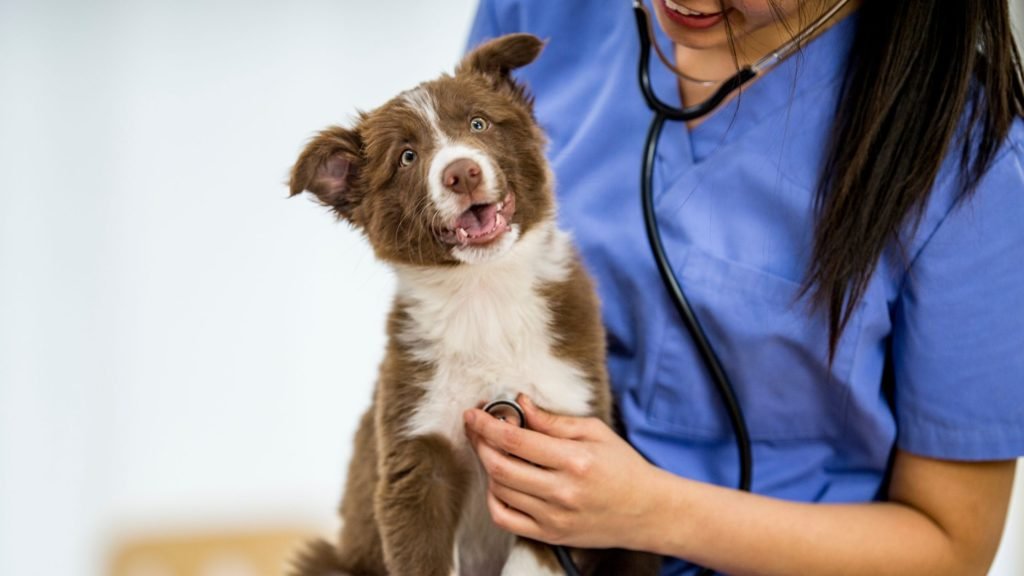Distemper is a highly contagious viral disease affecting dogs and other animals such as raccoons, skunks, and foxes. It can cause a wide range of symptoms and can lead to permanent brain damage or death if left untreated. In this blog post, we will discuss the transmission, symptoms, diagnosis, treatment, and prevention of distemper in dogs.
Distemper in dogs: how does it spread?
Transmission of distemper occurs through respiratory secretions such as saliva, nasal discharge, and urine of infected dogs. The virus can survive for long periods in the environment, making it difficult to control. Taking preventative measures to protect your dog from contracting distemper is essential. When a healthy dog passes through that location or breathes in those microorganisms, it can become infected. The disease can also spread through contact with contaminated objects such as food and water bowls.
That is a critical issue that applies to all dogs. Still, puppies, small dogs, elderly or sick dogs, and those whose mother has not been vaccinated are the most vulnerable to infection, and their bodies may not be able to handle the virus. It is essential to keep these facts in mind and be aware of potential exposure sources to take necessary precautions and prevent distemper spread.
Symptoms of distemper in dogs
Symptoms of distemper in dogs can vary widely. In the early stages, dogs may experience:
- fever
- coughing
- nasal discharge
- eye inflammation.
As the disease progresses, symptoms may include vomiting, diarrhea, seizures, and neurological signs such as twitching and confusion. In severe cases, distemper can cause permanent brain damage or death.
Diagnosis
Diagnosing distemper can be done through laboratory tests and clinical signs. Treatment typically involves supportive care and management of symptoms. However, there is no specific treatment for the virus. Antiviral medications are not effective. That is why preventing the disease is crucial.
Prevention for distemper in dogs
Prevention is the key to protecting dogs from distemper. Vaccination is the most effective way to prevent the disease, and regular veterinary check-ups and maintaining good hygiene and sanitation practices can also help to prevent the spread of the disease.

You May Also Interest: Understanding Bordetella in Dogs and Treatment Options
Canine distemper treatment at home
Home therapy for canine distemper might involve providing a pleasant and clean environment, lots of water, and balanced food to preserve strength and vitality.
However, that distemper is a severe and sometimes fatal disease, and the best method to protect your dog is through preventative measures such as immunization. If you fear your dog has distemper, you should seek veterinary care immediately. The dog may require intensive care, treatment, and close monitoring to guarantee the best possible care and minimize problems.
Distemper vaccine for dogs
Vaccination is the most effective way to prevent distemper in dogs. The distemper vaccine is provided as part of a combination vaccine called the DHPP (Distemper, Hepatitis, Parainfluenza, and Parvovirus) vaccine, which is usually given as a series of shots to puppies starting at 6 to 8 weeks of age, followed by boosters every 3 to 4 weeks until the puppy is 16 to 18 weeks old. After that, boosters are given on an annual basis.
You May Also Interest: All You Need to Know About Brucellosis in Dogs
In conclusion, distemper is a severe and potentially fatal disease that affects dogs and other animals. It can cause a wide range of symptoms, and there is no specific treatment for the virus. However, with proper management, dogs can recover from distemper, and vaccination is the key to prevention. Please keep your dog healthy and happy by vaccinating them and staying vigilant for any symptoms. If you notice any signs of distemper, be sure to visit your vet immediately.
FAQ about distemper in dogs
Can distemper be transmitted from dogs to humans?
Distemper is not transmissible to humans.
What are the long-term effects of distemper in dogs?
The long-term effects of distemper in dogs can include chronic brain damage, seizures, or even death.
Is it possible for a dog to have distemper but not show symptoms?
Yes, a dog can have distemper and not show any signs.
Can dogs recover from distemper?
With proper management and treatment, dogs can recover from distemper, but in some cases, it can cause permanent brain damage or death.
Is there a vaccine available to prevent distemper in dogs?
Distemper vaccines for dogs are available. Every dog would benefit from this.
Can distemper be treated at home in dogs?
A veterinarian’s intervention is recommended for distemper management. Some cases are mild enough to be treated at home, but some require hospitalization and extensive care.
Can distemper be transmitted through food or water?
Distemper spreads through a dog’s mucous membranes but can also be caught by touching an infected dog’s urine or feces.
What steps could I take to prevent distemper in dogs?
The best way to prevent distemper in dogs is through vaccination and regular veterinary check-ups. Maintaining good hygiene and sanitation practices can also help prevent the disease’s spread.

